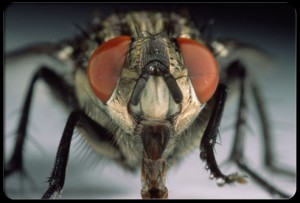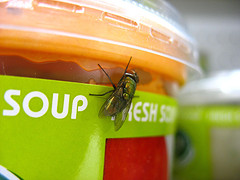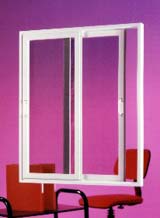Fly Screen windows and Doors
Fly Screen windows and Doors
Open windows and doors are a direct invitation to flying insects which are attracted in by the smell of food, warmth and shelter. Once inside all flies leave dirty marks which stain light fittings and windows. However, of most concern, they carry disease and contaminate food products with their eggs and larvae or with bacteria.
Fly Control
 Since the presence of flies in a catering area threatens health, failure to control them can bring penalties under the Food Safety Act. Fly screen windows and doors are a safe and effective way to help protect a property against flying insects. .
Since the presence of flies in a catering area threatens health, failure to control them can bring penalties under the Food Safety Act. Fly screen windows and doors are a safe and effective way to help protect a property against flying insects. .
 Attack Pest Control fly screen windows and doors for the most effective environmental solution to fly and pest control Attack the first line of defence.
Attack Pest Control fly screen windows and doors for the most effective environmental solution to fly and pest control Attack the first line of defence.
Our pest control experts operate in Abingdon, Oxford, Bicester, Banbury, Swindon, Faringdon, Reading, Newbury and Bracknell, Windsor and Slough areas.
At Attack Pest Control we believe that no fly infestation should not need to be tolerated, and so aim to eradicate any pest issue humanly, quickly, discretely and professional. Where possible no chemicals are used hence reducing our carbon footprint and improving the environment we live in. Fly screen windows and doors are an environmentally friendly way to prevent the spread of disease caused by flies.
Whether you have a pest situation involving vermin such as wasps, fleas, bees, rabbits, rats, flies, cockroaches, mice, bedbugs, foxes, pigeons, moles, spiders, ants, crawling insects, biting insects, flying insects, moles, mosquitoes, carpet beetle or woodworm our experts are here to help deal with your pest control problems.
Another service we offer is premises proofing to help prevent pest infestations as we believe that pest prevention is better than cure.
Fly Screen windows and Doors
The Food Safety (General Food Hygiene) Regulations 1995
SCHEDULE 1
Regulation 4(2)
Chapter I
General requirements for food premises (other than those specified in Chapter III)
- Food premises must be kept clean and maintained in good repair and condition.
- The layout, design, construction and size of food premises shall-
- permit adequate cleaning and/or disinfection;
- be such as to protect against the accumulation of dirt, contact with toxic materials, the shedding of particles into food and the formation of condensation or undesirable mould on surfaces;
- permit good food hygiene practices, including protection against cross contamination between and during operations, by foodstuffs, equipment, materials, water, air supply or personnel and external sources of contamination such as pests; and
- provide, where necessary, suitable temperature conditions for the hygienic processing and storage of products.
- An adequate number of washbasins must be available, suitably located and designated for cleaning hands. An adequate number of flush lavatories must be available and connected to an effective drainage system. Lavatories must not lead directly into rooms in which food is handled.
- Washbasins for cleaning hands must be provided with hot and cold (or appropriately mixed) running water, materials for cleaning hands and for hygienic drying. Where necessary, the provisions for washing food must be separate from the hand-washing facility.
- There must be suitable and sufficient means of natural or mechanical ventilation. Mechanical air flow from a contaminated area to a clean area must be avoided. Ventilation systems must be so constructed as to enable filters sand other parts requiring cleaning or replacement to be readily accessible.
- All sanitary conveniences within food premises shall be provided with adequate natural or mechanical ventilation.
- Food premises must have adequate natural and/or artificial lighting.
- Drainage facilities must be adequate for the purpose intended; they must be designed and constructed to avoid the risk of contamination of foodstuffs.
- Adequate changing facilities for personnel must be provided where necessary.
Chapter II
Specific requirements in rooms where foodstuffs are prepared, treated or processed (excluding dining areas and those premises specified in Chapter III)
- In rooms where food is prepared, treated or processed (excluding dining areas)-
- floor surfaces must be maintained in a sound condition and they must be easy to clean and, where necessary, disinfect. This will require the use of impervious, non-absorbent washable and non-toxic materials, unless the proprietor of the food business can satisfy the food authority that other materials used are appropriate. Where appropriate, floors must allow adequate surface drainage;
- wall surfaces must be maintained in a sound condition and they must be easy to clean and, where necessary, disinfect. This will require the use of impervious, non-absorbent, washable and non-toxic materials and require a smooth surface up to a height appropriate for the operations, unless the proprietor of the food business can satisfy the food authority that there materials used are appropriate;
- ceilings and overhead fixtures must be designed, constructed and finished to prevent the accumulation of dirt and reduce condensation, the growth of undesirable moulds and the shedding of particles;
- windows and other openings must be constructed to prevent the accumulation of dirt. Those which can be opened to the outside environment must where necessary be fitted with insect-proof screens which can be easily removed for cleaning. Where open windows would result in contamination of foodstuffs, windows must remain closed and fixed during production;
- doors must be easy to clean and, where necessary, disinfect. This will require the use of smooth and non-absorbent surfaces, unless the proprietor of the food business can satisfy the food authority that other materials used are appropriate;
- surfaces (including surfaces of equipment) in contact with food must be maintained in a sound condition and be easy to clean and, where necessary, disinfect. This will require the use of smooth, washable and non-toxic materials, unless the proprietor of the food business can satisfy the food authority that other materials used are appropriate.
- Where necessary, adequate facilities must be provided for the cleaning and disinfecting of work tools and equipment. These facilities must be constructed of materials resistant to corrosion and must be easy to clean and have an adequate supply of hot and cold water.
- Where appropriate, adequate provision must be made for any necessary washing of the food. Every sink or other such facility provided for the washing of food must have an adequate supply of hot and/or cold potable water as required, and be kept clean.
Chapter III
Requirements for movable and/or temporary premises (such as marquees, market stalls, mobile sales vehicles) premises used primarily as a private dwelling house, premises used occasionally for catering purposes and vending machines.
- Premises and vending machines shall be so sited, designed, constructed, and kept clean and maintained in good repair and condition, as to avoid the risk of contaminating foodstuffs and harbouring pests, so far as is reasonably practicable.
- In particular and where necessary-
- appropriate facilities must be available to maintain adequate personal hygiene (including facilities for the hygienic washing and drying of hands, hygienic sanitary arrangements and changing facilities);
- surfaces in contact with food must be in a sound condition and be easy to clean and, where necessary, disinfect. This will require the use of smooth, washable, non-toxic materials, unless the proprietor of the food business can satisfy the food authority that other materials used are appropriate;
- adequate provision must be made for the cleaning and, where necessary, disinfecting of work utensils and equipment;
- adequate provision must be made for the cleaning of foodstuffs;
- an adequate supply of hot and/or cold potable water must be available;
- adequate arrangements and/or facilities for the hygienic storage and disposal of hazardous and/or inedible substances and waste (whether liquid or solid) must be available;
- adequate facilities and/or arrangements for maintaining and monitoring suitable food temperature conditions must be available;
- foodstuffs must be so placed as to avoid, so far as is reasonably practicable, the risk of contamination.
Chapter IV
Transport
- Conveyances and/or containers used for transporting foodstuffs must be kept clean and maintained in good repair and condition in order to protect foodstuffs from contamination, and must, where necessary, be designed and constructed to permit adequate cleaning and/or disinfection.
-
- Receptacles in vehicles and/or containers must not be used for transporting anything other than foodstuffs where this may result in contamination of foodstuffs.
- Bulk foodstuffs in liquid, granular or powder form must be transported in receptacles and/or containers/tankers reserved for the transport of foodstuffs if otherwise there is a risk of contamination. Such containers must be marked in a clearly visible and indelible fashion, in one or more Community languages, to sow that they are used for the transport of foodstuffs, or must be marked “for foodstuffs only”.
- Where conveyances and/or containers are used for transporting anything in addition to foodstuffs or for transporting different foodstuffs at the same time, there must be effective separation of products where necessary, to protect against the risk of contamination.
- Where conveyances and/or containers have been used for transporting anything other than foodstuffs or for transporting different foodstuffs, there must be effective cleaning between loads to avoid the risk of contamination.
- Foodstuffs in conveyances and/or containers must be so placed and protected as to minimize the risk of contamination.
- Where necessary, conveyances and/or containers used for transporting foodstuffs, must be capable of maintaining foodstuffs at appropriate temperatures and, where necessary, designed to allow those temperatures to be monitored.
Chapter V
Equipment requirements
- All articles, fittings and equipment with which food comes into contact shall be kept clean and-
- be so constructed, be of such materials, and be kept in such good order, repair and condition, as to minimize any risk of contamination of the food;
- with the exception of non-returnable containers and packaging, be so constructed, be of such materials, and be kept in such good order, repair and condition, as to enable them to be kept thoroughly cleaned and, where necessary, disinfected, sufficient for the purposes intended;
- be installed in such a manner as to allow adequate cleaning of the surrounding area.
Chapter VI
Food waste
- Food waste and other refuse must not be allowed to accumulate in food rooms, except so far as is unavoidable for the proper functioning of the business.
- Food waste and other refuse must be deposited in closable containers unless the proprietor of the food business can satisfy the food authority that other types of containers used are appropriate. These containers must be of an appropriate construction, kept in sound condition, and where necessary be easy to clean and disinfect.
- Adequate provision must be made for the removal and storage of food waste and other refuse. Refuse stores must be designed and managed in such a way as to enable them to be kept clean, and to protect against access by pests, and against contamination of food, drinking water, equipment or premises.
Chapter VII
Water supply
- There must be an adequate supply of potable water. This potable water must be used whenever necessary to ensure foodstuffs are not contaminated.
- Where appropriate, ice must be made from potable water. This ice must be used whenever necessary to ensure foodstuffs are not contaminated. It must be made, handled and stored under conditions which protect it from all contamination.
- Steam used directly in contact with food must not contain any substance which presents a hazard to health, or is likely to contaminate the product.
- Water unfit for drinking used for the generation of steam, refrigeration, fire control and other similar purposes not relating to food, must be conducted in separate systems, readily identifiable and having no connection with, nor any possibility of reflux into, the potable water systems.
Chapter VIII
Personal hygiene
- Every person working in a food handling area shall maintain a high degree of personal cleanliness and shall wear suitable, clean and, where appropriate, protective clothing.
- No person, known or suspected to be suffering from, or to be a carrier of, a disease likely to be transmitted through food or while afflicted, for example with infected wounds, skin infections, sores or with diarrhoea, shall be permitted to work in any food in any food handling area in any capacity in which there is any likelihood of directly or indirectly contaminating food with pathogenic micro-organisms.
Chapter IX
Provisions applicable to foodstuffs
- No raw materials or ingredients shall be accepted by a food business if they are known to be, or might reasonably be expected to be, so contaminated with parasites, pathogenic micro-organisms, or toxic, decomposed or foreign substances, that after normal sorting and/or preparatory or processing procedures hygienically applied by food businesses, they would still be unfit for human consumption.
- Raw materials and ingredients stored in the establishment shall be kept in appropriate conditions designed to prevent harmful deterioration and to protect them for contamination.
- All food which is handled, stored, packaged, displayed and transported, shall be protected against any contamination likely to render the food unfit for human consumption, injurious to health or contaminated in such a way that it would be unreasonable to expect it to be consumed in that state. In particular, food must be so placed and/or protected as to minimize any risk of contamination. Adequate procedures must be in place to ensure pests are controlled.
- Hazardous and/or inedible substances, including animal feedstuffs, shall be adequately labelled and stored in separate and secure containers.
Chapter X
Training
- The proprietor of a food business shall ensure that food handlers engaged in the food business are supervised and instructed and/or trained in food hygiene matters commensurate with their work activities.







